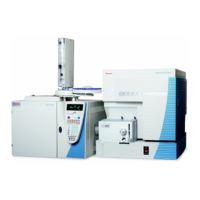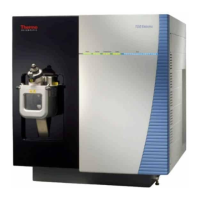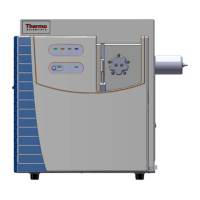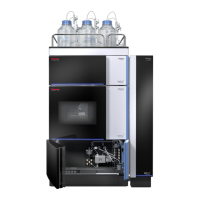7
Diagnostics and Troubleshooting
Troubleshooting
122 TSQ Quantum XLS Series User Guide Thermo Scientific
The most reliable way to find vacuum leaks is to spray a gas around the vacuum manifold and
look for the characteristic ions in full-scan EI mode. Argon produces m/z 40. Or, you can use
compressed electronic dusting spray containing an HFC. For example, Falcon™ Dust-Off™
and MicroCare™ Micro-Blast™ contain tetrafluoroethane, which produces ions at m/z 69
and 83.
Issue: Forepump will
not turn on.
Possible causes/solutions
• The forepump is off. Check the forepump switch.
• The vacuum service switch is in the Off position. Place the vacuum service switch in the
operating position.
• The forepump power cable from the mass spectrometer is not connected. Connect the
power cable.
• The forepump is faulty. Replace the forepump.
Issue: Forepump
powers on, but will not
pump down.
Possible causes/solutions
• The oil level in the forepump is insufficient. Check oil level; add oil if necessary.
• The foreline is leaking. Check the clamps and connectors. Replace the foreline hose if a
hole is found.
• The vacuum manifold is leaking.
• The forepump is faulty. Replace the forepump.
Issue: Turbo pump
shuts off during
operation.
Possible cause/solution
• The foreline pressure is too high. Check for leaks in the foreline.
Issue: Unexpected full
ventilation occurs.
Possible causes/solutions
• A gross leak is present. Check for leaks.
• The system was vented through the inlet valve. Close and plug the inlet valve.
• The GC column broke at the transfer line. Replace the GC column. See “Removing and
Installing a GC Capillary Column” on page 107.
• The foreline was cut. Replace the foreline hose.
Note The mass spectrometer performs a leak check during the automatic tuning and
calibration procedure and during the maintenance tune procedure. The mass
spectrometer returns a pass or fail report.

